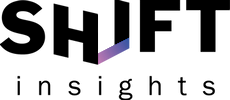Authors



Acknowledgements
Funded by:

This research was conducted with experts from:

Contributors
- Andre Côté
- Mark Hazelden
- Erin Ellis
- Nina Rafeek Dow
- Sanjana Shah
- Mariana Rodrigues
- Kaylee Chu
September 2023

1
OECD, Digital Government Index: 2019 results, OECD Public Governance Policy Papers, 2019, https://www.oecd.org/gov/digital-government-index-4de9f5bb-en.htm.
2
United Nations, E-Government Survey 2022: The Future of Digital Government, 2022, https://desapublications.un.org/sites/default/files/publications/2022-09/Report%20without%20annexes.pdf.
3
Canadian Digital Service, How the Canadian Digital Service Started…A Made-in-Canada Approach to Digital Government, 2023, https://digital.canada.ca/how-cds-started.
4
United Nations, E-Government Survey 2022, The Future of Digital Government, New York: 2022, https://publicadministration.un.org/egovkb/en-us/Reports/UN-E-Government-Survey-2022.
5
Treasury Board of Canada Secretariat, Policy on Service and Digital, 2019, https://www.tbs-sct.canada.ca/pol/doc-eng.aspx?id=32603.
6
European Commission, Digital Government Factsheet 2019 Finland, 2019, https://joinup.ec.europa.eu/sites/default/files/inline-files/Digital_Government_Factsheets_Finland_2019.pdf.
7
David Eaves and Ben McGuire, “Lessons from Estonia on Digital Government,” Policy Options, February 7, 2019, https://policyoptions.irpp.org/fr/magazines/february-2019/lessons-estonia-digital-government.
8
Queue.it, How Denmark Became a Global Leader in Digital Government, 2023, https://queue-it.com/blog/government-digital-transformation-denmark.
9
Treasury Board of Canada Secretariat, Evaluation of the Canadian Digital Service, 2021, https://www.canada.ca/en/treasury-board-secretariat/corporate/reports/evaluation-canadian-digital-service.html.
10
Eaves and McGuire, “Lessons from Estonia on Digital Government,” Policy Options.
11
Public Health Agency of Canada, Audit of Information Technology Systems Development at the Public Health Agency of Canada and Health Canada, 2020, https://www.canada.ca/en/public-health/corporate/transparency/corporate-management-reporting/internal-audits/reports/it-systems-audit.html.
12
Natural Resources Canada, Audit of the Management of Aging IT Systems, 2019, https://natural-resources.canada.ca/nrcan/transparency/reporting-accountability/plans-performance-reports/audit-evaluation/reports-year/reports-2013/audit-management-aging-it-systems/22224.
13
Shared Services Canada, Audit of Shared Services Canada’s Information Technology Asset Management, 2017, https://www.canada.ca/en/shared-services/corporate/publications/audit-shared-services-canada-information-technology-asset-management.html.
14
United Nations. E-Government Survey 2022.
15
Treasury Board of Canada Secretariat. (2021). Infographic for Government of Canada. Retrieved from: https://www.tbs-sct.canada.ca/ems-sgd/edb-bdd/index-eng.html#infographic/gov/gov/services.
16
Canadian Digital Service, Delivering Digital Services by 2025, 2019, https://digital.canada.ca/roadmap-2025; Canadian Digital Service, How the Canadian Digital Service Started…A Made-in-Canada Approach to Digital Government, 2023, https://digital.canada.ca/how-cds-started.
17
Treasury Board of Canada Secretariat. (2021). Infographic for Government of Canada. Retrieved from: https://www.tbs-sct.canada.ca/ems-sgd/edb-bdd/index-eng.html#infographic/gov/gov/services.
18
Canadian Digital Service, Delivering Digital Services by 2025, 2019; Canadian Digital Service, How the Canadian Digital Service Started, 2023.
19
Ibid.
20
Public Safety Canada, Internal Audit of Information Technology Security, 2020, https://www.publicsafety.gc.ca/cnt/rsrcs/pblctns/2020-ntrnl-dt-its/index-en.aspx.
21
Public Health Agency of Canada, Audit of Information Technology Systems, 2020.
22
Auditor General of Canada, Report of the Auditor General of Canada: Chapter 2 Access to Online Services, 2013, https://publications.gc.ca/collections/collection_2013/bvg-oag/FA1-2013-2-2-eng.pdf.
23
Public Safety Canada, Internal Audit of Information Technology Security, 2020.
24
Treasury Board of Canada Secretariat. (2021). Evaluation of the Open Government Program. Retrieved from: https://www.canada.ca/en/treasury-board-secretariat/corporate/reports/evaluation-open-government-program.html.
25
Canadian Digital Service, Delivering Digital Services by 2025, 2019; Canadian Digital Service, How the Canadian Digital Service Started, 2023.
26
Ibid.
27
Carleton SPPA, Government of Canada Contract Analysis, 2022, https://govcanadacontracts.ca.
28
Canadian Digital Service, Delivering Digital Services by 2025, 2019; Canadian Digital Service, How the Canadian Digital Service Started, 2023.
29
Amanda Clarke and Sean Boots, A Guide to Reforming Information Technology Procurement in the Government of Canada, Carleton SPPA. 2022, https://govcanadacontracts.ca/it-procurement-guide.
30
Canadian Digital Service, Delivering Digital Services by 2025, 2019; Canadian Digital Service, How the Canadian Digital Service Started, 2023.
31
Ibid.
32
Clarke and Boots. A Guide to Reforming Information Technology Procurement, 2022.
33
Canadian Digital Service, Delivering Digital Services by 2025, 2019; Canadian Digital Service, How the Canadian Digital Service Started, 2023.
34
Natural Resources Canada, Audit of the Management of Aging IT Systems, 2019.
35
Public Safety Canada, Internal Audit of Information Technology Security, 2020.
36
Public Health Agency of Canada, Audit of Information Technology Systems, 2020.
37
Stephen Harrington and Wendy Cukier, Digital Transformation of Government Addressing Talent Gaps and the Needs of an Inclusive Workforce, Future Skills Centre, 2022, https://fsc-ccf.ca/research/digital-transformation-of-government.
38
Canadian Digital Service, Delivering Digital Services by 2025, 2019; Canadian Digital Service, How the Canadian Digital Service Started, 2023.
39
Treasury Board of Canada Secretariat, Evaluation of the Open Government Program, 2021, https://www.canada.ca/en/treasury-board-secretariat/corporate/reports/evaluation-open-government-program.html.
40
Canadian Digital Service, Delivering Digital Services by 2025, 2019; Canadian Digital Service, How the Canadian Digital Service Started, 2023.
41
Ibid.
42
Annalise Huynh and Andrew Do, Digital Literacy in a Digital Age: A Discussion Paper, The Brookfield Institute for Innovation + Entrepreneurship, 2017, https://brookfieldinstitute.ca/digital-literacy-in-a-digital-age.
43
Viet Vu, Creig Lamb, and Rob Willoughby, I, Human: Digital and Soft Skills in a New Economy. The Brookfield Institute for Innovation + Entrepreneurship, 2019, https://brookfieldinstitute.ca/wp-content/uploads/I-Human-ONLINE-FA.pdf.
44
Harrington and Cukier, Digital Transformation of Government, Future Skills Centre.
45
Ibid.
46
Daniel Munro and Joshua Zachariah, Inclusive Innovation Monitor: Tracking Growth, Inclusion, and Distribution For A More Prosperous, Just Society, The Brookfield Institute for Innovation + Entrepreneurship, 2021, https://brookfieldinstitute.ca/wp-content/uploads/Inclusive_Innovation_Monitor-Report.pdf.
47
Viet Vu, Creig Lamb and Asher Zafar, Who Are Canada’s Tech Workers? The Brookfield Institute for Innovation + Entrepreneurship, 2019, https://brookfieldinstitute.ca/wp-content/uploads/FINAL-Tech-Workers-ONLINE.pdf.
48
Ibid.
49
Treasury Board of Canada Secretariat, Evaluation of the Canadian Digital Service, 2021.
50
Own analysis using 2021 Census data and digital worker definition from Viet Vu, Creig Lamb and Asher Zafar, Who Are Canada’s Tech Workers? The Brookfield Institute for Innovation + Entrepreneurship, 2019.
51
Canadian Digital Service, Delivering Digital Services by 2025, 2019; Canadian Digital Service, How the Canadian Digital Service Started, 2023.
52
Harrington and Cukier, Digital Transformation of Government, Future Skills Centre, 2022.
53
Ibid.
54
Canadian Digital Service, Delivering Digital Services by 2025, 2019; Canadian Digital Service, How the Canadian Digital Service Started, 2023.
55
Canadian Digital Service, Delivering Digital Services by 2025, 2019; Canadian Digital Service, How the Canadian Digital Service Started, 2023.
56
Harrington and Cukier, Digital Transformation of Government, Future Skills Centre, 2022.
57
Canadian Digital Service. Delivering Digital Services by 2025. 2019; Canadian Digital Service. How the Canadian Digital Service Started, 2023.
58
Harrington and Cukier, Digital Transformation of Government, Future Skills Centre, 2022.
59
Canadian Digital Service, Delivering Digital Services by 2025, 2019.
60
Ibid.
61
Ibid.
62
Own analysis using 2021 Census data and digital worker definition from Viet Vu, Creig Lamb and Asher Zafar, Who Are Canada’s Tech Workers? The Brookfield Institute for Innovation + Entrepreneurship, 2019.
63
Canadian Digital Service, Delivering Digital Services by 2025, 2019; Canadian Digital Service, How the Canadian Digital Service Started, 2023.
64
GC Digital Talent, The Talent Cloud Results Report, Government of Canada, 2021, https://talent.canada.ca/en/talent-cloud/report.
65
Harrington and Cukier, Digital Transformation of Government, Future Skills Centre, 2022.
66
GC Digital Talent, The Talent Cloud Results Report, 2021.
67
Treasury Board of Canada Secretariat, Interchange Canada, 2016, https://www.canada.ca/en/treasury-board-secretariat/services/professional-development/interchange-canada.html.
68
GC Digital Talent, The Talent Cloud Results Report, 2021.
69
Harrington and Cukier, Digital Transformation of Government, Future Skills Centre, 2022.
70
Canadian Digital Service, Delivering Digital Services by 2025, 2019; Canadian Digital Service, How the Canadian Digital Service Started, 2023.
71
Treasury Board of Canada Secretariat, Evaluation of the Canadian Digital Service, 2021.
72
Canadian Digital Service, Delivering Digital Services by 2025, 2019; Canadian Digital Service, How the Canadian Digital Service Started, 2023.
73
Harrington and Cukier, Digital Transformation of Government, Future Skills Centre, 2022.
74
Treasury Board of Canada Secretariat, Evaluation of the Canadian Digital Service, 2021.
75
Natural Resources Canada, Audit of the Management of Aging IT Systems, 2019.
76
Canadian Digital Service, Delivering Digital Services by 2025, 2019; Canadian Digital Service, How the Canadian Digital Service Started, 2023.
77
Public Health Agency of Canada, Audit of Information Technology Systems, 2020.
78
Public Safety Canada, Internal Audit of Information Technology Security, 2020.
79
Canadian Digital Service, Delivering Digital Services by 2025, 2019; Canadian Digital Service, How the Canadian Digital Service Started, 2023.
80
Treasury Board of Canada Secretariat, Evaluation of the Canadian Digital Service, 2021.
81
Tea Hadziristic, The State of Digital Literacy in Canada: A Literature Review, The Brookfield Institute for Innovation + Entrepreneurship, 2017, https://brookfieldinstitute.ca/the-state-of-digital-literacy-a-literature-review/; Sam Andrey, Mohammed Masoodi, Nisa Malli, and Selasi Dorkenoo, Mapping Toronto’s Digital Divide, The Brookfield Institute for Innovation + Entrepreneurship, 2021, https://brookfieldinstitute.ca/mapping-torontos-digital-divide.
82
Hadziristic, The State of Digital Literacy in Canada, The Brookfield Institute, 2017.
83
Andrey, Masoodi, Malli, and Dorkenoo, Mapping Toronto’s Digital Divide. The Brookfield Institute, 2021.
84
Hadziristic, The State of Digital Literacy in Canada, The Brookfield Institute, 2017.
85
Innovation, Science and Economic Development Canada, High-Speed Internet Access Dashboard, 2023, https://www.ic.gc.ca/app/scr/stsidcr/web/high-speed-internet-canada/en/universal-access/broadband-dashboard.html.
86
Canadian Radio-television and Telecommunications Commission, Current Trends – High-speed Broadband, 2023, https://crtc.gc.ca/eng/publications/reports/policymonitoring/ban.htm.
87
Andrey, Masoodi, Malli, and Dorkenoo, Mapping Toronto’s Digital Divide, The Brookfield Institute, 2021.
88
Innovation, Science and Economic Development, Price Comparisons of Wireline, Wireless and Internet Services in Canada and with Foreign Jurisdictions: 2021 Edition, 2021, https://ised-isde.canada.ca/site/strategic-policy-sector/en/telecommunications-policy/price-comparisons-wireline-wireless-and-internet-services-canada-and-foreign-jurisdictions-2022.
89
Canadian Radio-television and Telecommunications Commission, Annual Highlights of the Telecommunications Sector 2020, https://crtc.gc.ca/eng/publications/reports/policymonitoring/2021/tel.html.
90
Statistics Canada, COVID-19 Pandemic: School Closures and the Online Preparedness of Children, April 15, 2020. https://www150.statcan.gc.ca/n1/pub/45-28-0001/2020001/article/00001-eng.htm.
91
Jordan Davidson and Christoph Schimmele, Evolving Internet Use Among Canadian Seniors, Statistics Canada: Analytical Studies Branch Research Paper Series, July 10, 2019, https://www150.statcan.gc.ca/n1/pub/11f0019m/11f0019m2019015-eng.htm.
92
David Wavrock, Grant Schellenberg and Christoph Schimmele, Canadians’ Use of the Internet and Digital Technologies Before and During the COVID-19 Pandemic, Statistics Canada: Economic and Social Reports, April 28, 2022, https://www150.statcan.gc.ca/n1/en/pub/36-28-0001/2022004/article/00004-eng.pdf?st=0UkUnSMw.
93
Jessica Mundie, “Canadians Lacking Digital Literacy Left Behind as World Becomes More Dependent on Technology,” National Post, December 30, 2022, https://nationalpost.com/feature/left-behind-digital-literacy.
94
Innovation, Science and Economic Development Canada, High-speed Internet for All Canadians, July 26, 2023, https://ised-isde.canada.ca/site/high-speed-internet-canada/en.
95
Briar Stewart, “How COVID-19 Worsens Canada’s Digital Divide,” CBC News, September 23, 2020, https://www.cbc.ca/news/canada/british-columbia/covid-19-highlights-urban-rural-digital-divide-1.5734167.
96
Innovation, Science and Economic Development Canada, High-speed Internet for All Canadians.
97
Innovation, Science and Economic Development Canada, High-Speed Internet Access Dashboard, 2023, https://www.ic.gc.ca/app/scr/stsidcr/web/high-speed-internet-canada/en/universal-access/broadband-dashboard.html.
98
Stewart, “How COVID-19 Worsens Canada’s Digital Divide.” CBC News.
99
Canadian Radio-television and Telecommunications Commission, “CRTC Launches Review of Approach to Internet Services Competition and Lowers Some Wholesale Rates Effectively Immediately,” News release, March 8, 2023, https://www.canada.ca/en/radio-television-telecommunications/news/2023/03/crtc-launches-review-of-approach-to-internet-services-competition-and-lowers-some-wholesale-rates-effectively-immediately.html.
100
Innovation, Science and Economic Development Canada, Connecting Families, October 11, 2022, https://ised-isde.canada.ca/site/connecting-families/en.
101
Innovation, Science and Economic Development Canada, Digital Literacy Exchange Program, June 7, 2023, https://ised-isde.canada.ca/site/digital-literacy-exchange-program/en.
102
Natural Resources Canada, Audit of the Management of Aging IT Systems, 2019.
103
Public Health Agency of Canada, Audit of Information Technology Systems, 2020.
104
Natural Resources Canada, Audit of the Management of Aging IT Systems, 2019.
105
Public Health Agency of Canada, Audit of Information Technology Systems, 2020.
106
Canadian Digital Service, Delivering Digital Services by 2025, 2019; Canadian Digital Service, How the Canadian Digital Service Started, 2023.
107
Public Health Agency of Canada, Audit of Information Technology Systems, 2020.
108
Canadian Digital Service, Delivering Digital Services by 2025, 2019; Canadian Digital Service, How the Canadian Digital Service Started, 2023.
109
Ibid.
110
Ibid.
111
Ibid.
112
Canadian Digital Service, Delivering Digital Services by 2025. 2019; Canadian Digital Service, How the Canadian Digital Service Started, 2023.
113
Eaves and McGuire, “Lessons from Estonia on Digital Government,” Policy Options.
114
Clarke and Boots, A Guide to Reforming Information Technology Procurement in the Government of Canada.
115
Ibid.
116
Ibid.
117
Innovation, Science and Economic Development Canada, Innovative Solutions Canada: Annual Report 2021–22: Annex A: Departments mandated spending, https://ised-isde.canada.ca/site/innovative-solutions-canada/en/innovative-solutions-canada-annual-report-2021-22#annexA.
118
Harrington and Cukier, Digital Transformation of Government, Future Skills Centre, 2022.
119
Canadian Digital Service. Delivering Digital Services by 2025, 2019; Canadian Digital Service. How the Canadian Digital Service Started, 2023.
120
Ibid.
121
Harrington and Cukier, Digital Transformation of Government, Future Skills Centre, 2022.
122
Canadian Digital Service, Delivering Digital Services by 2025, 2019; Canadian Digital Service. How the Canadian Digital Service Started, 2023.
123
Ibid.
124
Code for Canada, Collaborations, https://codefor.ca/collaborate.
125
Canadian Digital Service, Delivering Digital Services by 2025. 2019; Canadian Digital Service. How the Canadian Digital Service Started, 2023.
126
Nour Abdelaal and Sam Andrey, Overcoming Digital Divides: What We Heard and Recommendations. The Ryerson Leadership Lab, 2022, https://www.ryersonleadlab.com/overcoming-digital-divides-what-we-heard.
127
Louise BigEagle, Sask. “First Nation to Provide Community Members High-speed Internet Through SpaceX’s Starlink,” CBC News, December 21, 2022, https://www.cbc.ca/news/canada/saskatchewan/spacex-s-starlink-rural-community-1.6690957.
128
Nillay Patel. “Starlink Review: Broadband Dreams Fall to Earth,” The Verge, May 14, 2021. https://www.theverge.com/22435030/starlink-satellite-internet-spacex-review.
129
Abdelaal and Andrey, Overcoming Digital Divides, The Ryerson Leadership Lab, 2022.